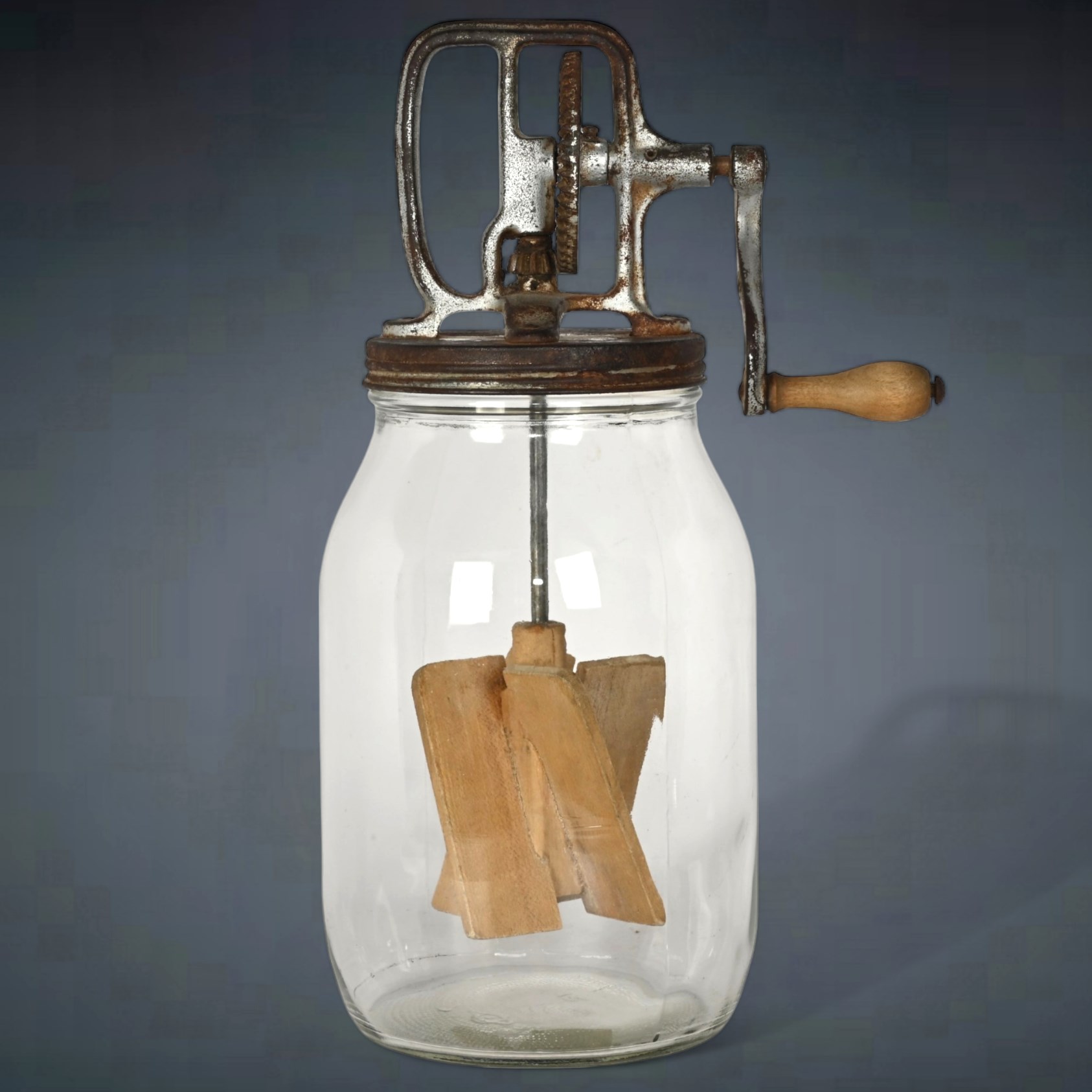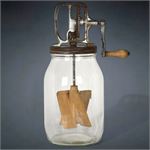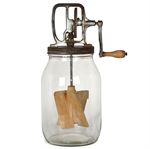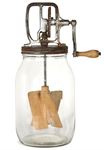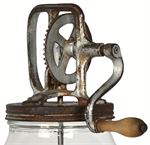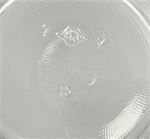Antique Glass Butter Churn with Hand Crank, Early 20th Century View Watchlist >
- Winning Bid: $36.00
- 21 Bid(s) View Bid History
- High Bidder: mtopliff
Seller Accepts Credit Cards
Payment and pickup instructions will be available on your invoice (under "My Account") at the conclusion of this auction.
Lot # R318
System ID # 20025220
Start Date
End Date
7 Watching
Antique Glass Butter Churn with Hand Crank, Early 20th Century
This charming butter churn showcases a large, clear glass jar with an overall size of 14 1/2 inches in height by 8 inches in width and 6 inches in depth. It features a sturdy hand-crank mechanism attached to a metal lid, complete with classic wooden paddles for churning. The churn’s rustic metal components display an authentic patina, embodying the functional beauty of early 20th-century kitchenware.
Condition: Good, with age-appropriate wear and tested functionality. The glass remains intact, while the metal crank and paddles show signs of use, consistent with its historical purpose and adding to its vintage character.
Put this baby to work!
This butter churn was used to make homemade butter by agitating cream until it thickened and separated into butter and buttermilk. Here’s how the process typically worked:
-
Adding Cream: The glass jar would be filled with fresh cream, typically at room temperature to speed up the process.
-
Churning: The handle on top, connected to a metal crank mechanism, would be turned by hand. This action rotated the wooden paddles inside the jar, agitating the cream vigorously.
-
Forming Butter: As the paddles churned, the fat molecules in the cream would start to clump together, gradually forming butter. This process usually took several minutes of continuous turning.
-
Separating Buttermilk: Eventually, the butter would solidify, separating from the liquid buttermilk. The buttermilk could be poured off and used separately, while the butter was rinsed to remove any remaining buttermilk, ensuring a longer shelf life.
-
Shaping and Storage: The butter would then be shaped, salted if desired, and stored for use.
This hand-cranked butter churn represents the traditional, labor-intensive method of butter-making, commonly used before the widespread availability of electric appliances in the early 20th century. Today, pieces like this are prized for their rustic aesthetic and historical significance, offering a hands-on glimpse into vintage culinary practices.
